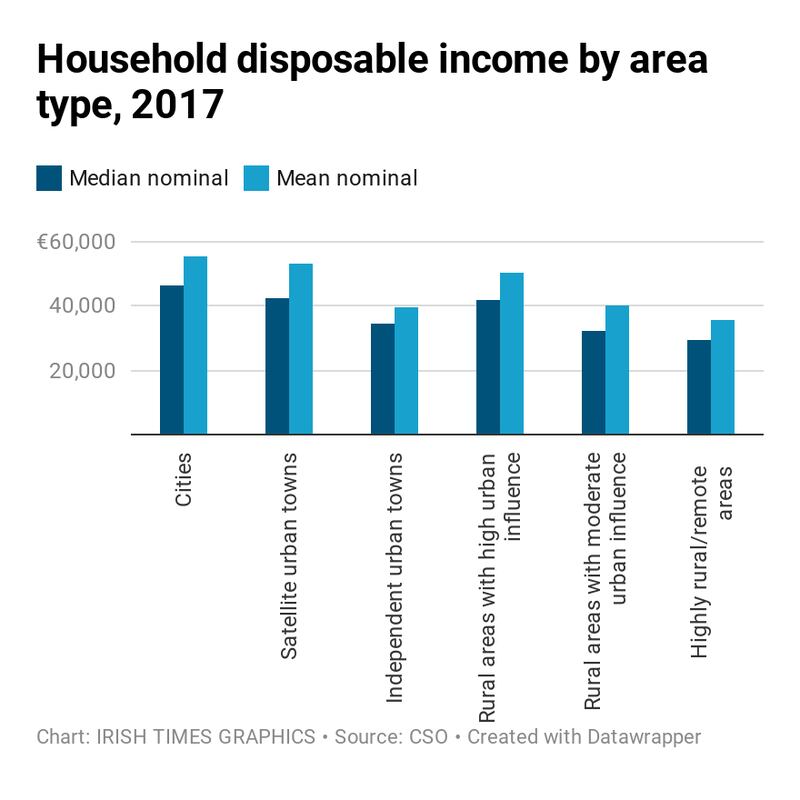People living in cities were more likely to be single, have higher disposable incomes and a third-level degree compared to those in rural areas, according to a new report from the Central Statistics Office (CSO).
Some 47 per cent of people over 15 years of age who lived in cities were single, significantly higher than the national average of 41 per cent.
Remote rural areas had the highest proportion of widowers at more than seven per cent. The figures were contained in a recent report “Urban and Rural Life in Ireland 2019” published by the CSO on Monday.

The report compared various measures such as income, education, health and age between six different areas: Cities, satellite urban towns, independent urban towns, rural areas with high urban influence, rural areas with moderate urban influence, and remote rural areas.

The report found the areas with the highest average age (41) were remote rural areas, and the youngest areas were satellite urban towns with an average age of 34.
More than a third of people living in cities had a third level degree compared to 18 per cent of those in remote rural areas.
Over half of the population of Kildare and Wicklow lived in satellite urban towns, which were defined as towns of less than 50,000 people where a fifth of residents worked in a nearby city.
Leitrim had the most people living in areas classed as remote at 69 per cent, followed by Donegal at 41 per cent.

Independent urban towns, where less than 20 per cent of inhabitants worked in a city, had the highest unemployment rate at 6.3 per cent. Rural areas with a high urban influence had the lowest rate at just four per cent.
In terms of property prices cities had the highest median price at €336,000 for a home, compared to remote rural areas where the median price was €125,000.
One in five commuters left their home to travel for work or study between 8:30am and 9am, the CSO report found. One in ten people living in remote rural areas worked mainly from home, compared to 2.3 per cent of city residents.












